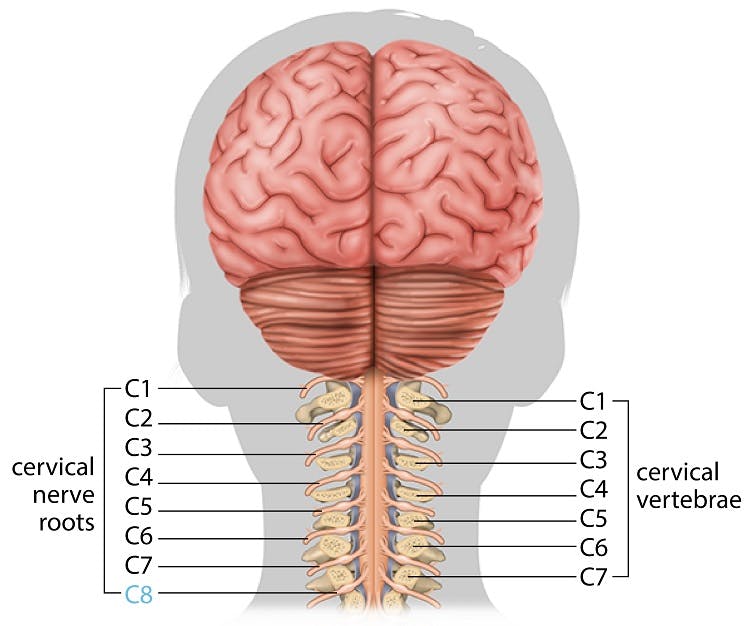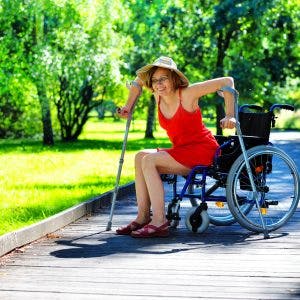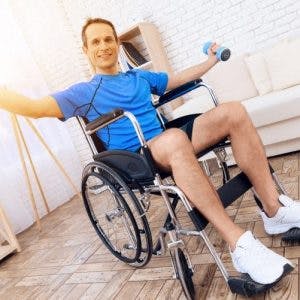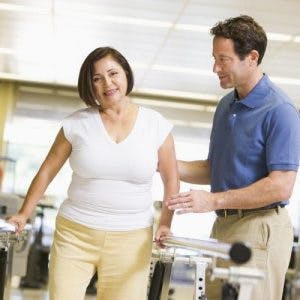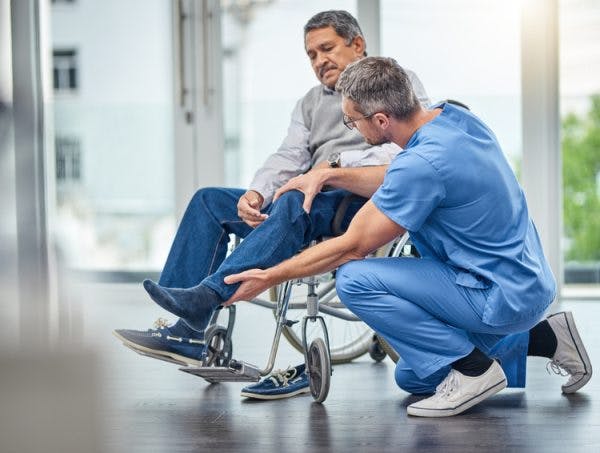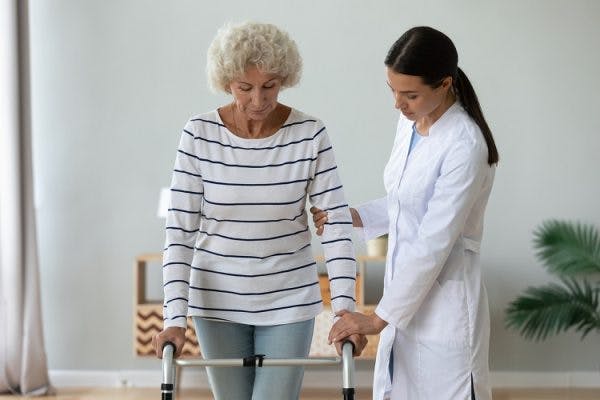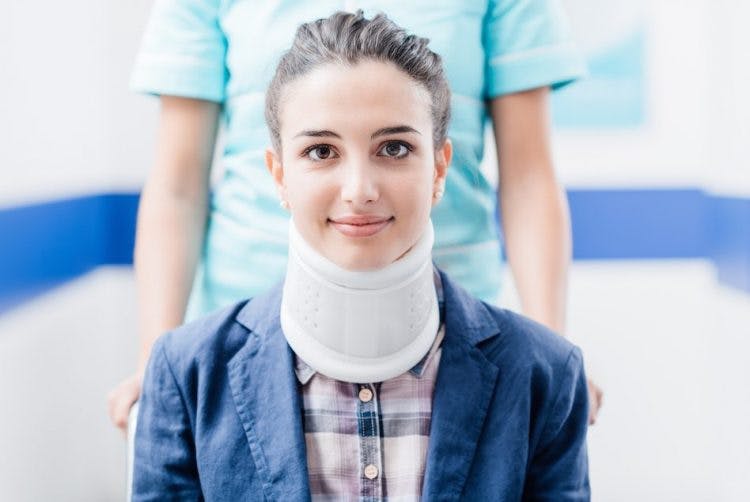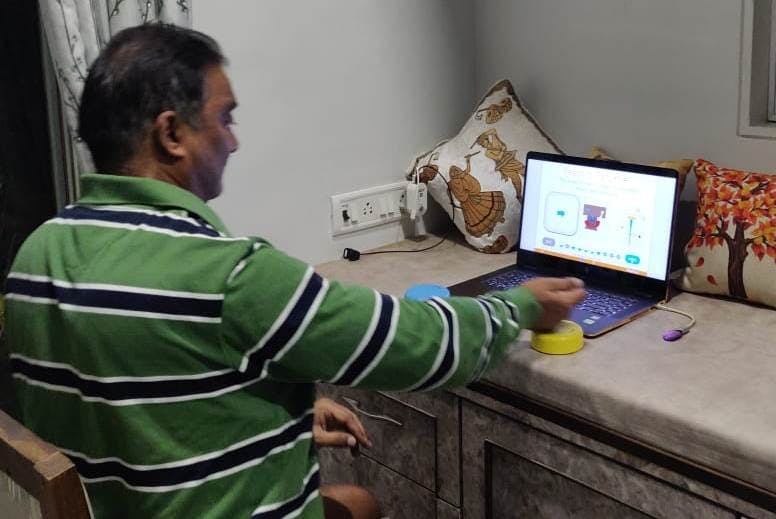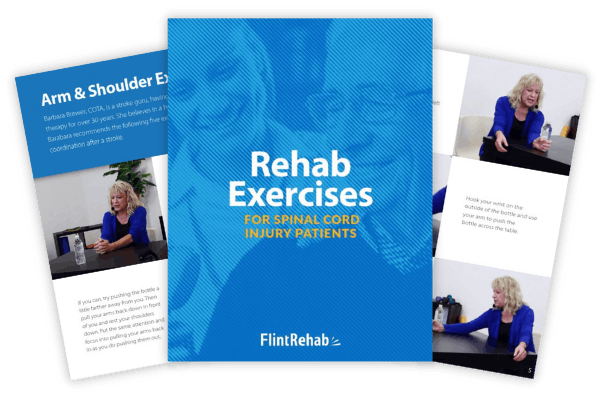A C8 spinal cord injury refers to damage at the nerve roots between the C7 and T1 vertebrae. While individuals with C8 spinal cord injuries generally can control movement in their arms, they may experience weakness and loss of sensation in the hands, trunk, and lower body.
The good news is that, while cervical spinal cord injuries are the most severe, a C8 spinal cord injury is the least severe among cervical SCIs. Higher level cervical spinal cord injuries, such as a C1 or C2, can result in quadriplegia (paralysis of all four limbs) while a C8 spinal cord injury can result in paraplegia (paralysis of the legs).
To help you understand what to expect after C8 spinal cord injury, this article will discuss potential complications and recovery outlook.
Complete vs Incomplete C8 Spinal Cord Injury
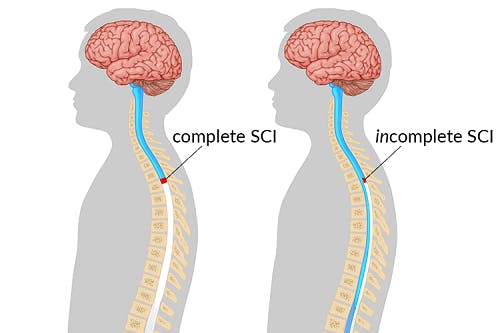
The severity of a C8 spinal cord injury plays a significant role in determining recovery outlook. One important factor to consider is whether the spinal cord injury is complete or incomplete.
A complete spinal cord injury is caused by damage that affects all connections between the brain and areas below the level of injury. Messages cannot get past the damage, resulting in no movement or sensation below the level of injury.
In contrast, an incomplete spinal cord injury indicates that some connections in the spinal cord were not damaged. Consequently, messages can still be sent, allowing individuals to potentially feel or move some areas below their level of injury.
However, it’s also possible for C8 spinal cord injury patients to mistake their incomplete injuries for complete ones.
Spinal shock describes the temporary loss of functions and reflexes below your level of injury. However, once inflammation in the spinal cord starts to die down after the initial injury, functions and reflexes may gradually start to return. As a result, some individuals may discover that their spinal cord injury is not as severe as it initially appeared.
In the following section, we’ll discuss how damage to the C8 nerve roots affect movement and sensation.
Functions Affected by C8 Spinal Cord Injury
Each segment of the spinal cord connects to, or innervates, a different set of muscles for movement and area of skin for sensation. Your level of injury refers to the lowest part of the spinal cord where movement and sensation are unaffected.
The C8 nerve roots affect sensation at the pinky and ring fingers and connect to the muscles responsible for bending the fingers. Doctors will test for normal sensation and movement at these areas to determine a C8 level of injury.
Functions that are innervated at and above one’s level of injury will not be affected. Therefore, C8 spinal cord injury patients should experience typical sensation and movement at the head, neck, shoulders, and most of the arms and hands.
Depending on the severity of the injury, all functions innervated below the C8 level of injury can be affected, including:
- Sensation around the inner forearm, armpit, trunk, and lower body
- Separation of the fingers (finger abduction)
- Sitting and standing balance
- Sexual functions
- Bowel and bladder functions
- Any movements involving the hips, knees, or ankles (standing, walking, etc.)
Now that you understand which functions may be affected by a C8 spinal cord injury, let’s discuss possible complications and methods for recovery.
C8 Spinal Cord Injury Complications

Every spinal cord injury is unique and the onset of complications will vary case by case.
Below, we’ll discuss common complications amongst C8 spinal cord injury patients:
- Increased Risk of Falling. Paralysis of the muscles that make up the trunk will compromise overall balance. Individuals might struggle to sit upright for long periods with or without support or may fall over easily when reaching for objects.
- Autonomic Dysreflexia. Autonomic dysreflexia is a reflex action characterized by a spike in blood pressure that can cause headaches, nausea, sweating, and reduced heart rate. Any sort of stimulation below your level of injury such as a full bladder, skin irritation, tight clothes, and extreme temperatures can trigger autonomic dysreflexia.
- Bowel and Bladder Dysfunction. Following a C8 SCI, individuals may struggle to sense when their bladders are full or when they need to empty their bowels. Moreover, they may be unable to control the bladder and bowel muscles, which can cause urinary retention, leaking, and constipation.
- Muscle Atrophy and Osteoporosis. Due to limited mobility, individuals may be unable to move around or bear weight on their legs. Physical inactivity will result in reduced muscle mass and bone density, which can increase your risk of fractures and cause poor circulation.
- Spasticity. Spasticity refers to involuntary muscle contractions caused by nerve damage. It can occur in the form of spasms or stiff movements and is one of the most common causes of pain after SCI.
- Pressure Ulcers. Because individuals with a C8 spinal cord injury may spend much of their time sitting, they are at an increased risk of getting pressure ulcers on their buttocks. This can be avoided by frequently weight shifting and changing positions
C8 Spinal Cord Injury Recovery
Even amongst C8 spinal cord injury patients, recovery outcomes can be completely different.
Damaged neurons in the spinal cord are not capable of healing, which is why the severity of injury significantly affects recovery outlook. Fortunately, spared neural pathways present in incomplete spinal cord injuries can utilize the spinal cord’s ability to rewire itself (neuroplasticity) to potentially relearn affected functions.
The best way to promote neuroplasticity after a spinal cord injury is to consistently practice weakened movements. The more you repeat, the better the spinal cord will get at perceiving a demand for that function, which can prompt neuroadaptive rewiring and strengthening.
Generally, the less severe your spinal cord injury is, the greater the potential to recover. However, as long as there’s some preserved motor and/or sensory function below your level of injury, improvements are possible.
Below, we’ll discuss common methods for promoting C8 spinal cord injury recovery.
Physical Therapy
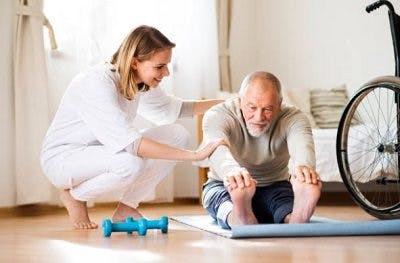
Physical therapy plays an essential role in the C8 spinal cord injury rehabilitation process.
A physical therapist will assess your functional abilities and guide you through a personalized exercise regimen to maximize your mobility. These exercises will help maintain full range of motion in the joints and strengthen the muscles.
Occupational Therapy

Because C8 SCI patients will have the majority of their upper limb functions, they’re generally capable of independent living. Occupational therapy can help ease the transition back to everyday life by teaching individuals how to perform activities of daily living such as dressing, bathing, and grooming.
An occupational therapist may teach you how to use adaptive tools or new ways to perform everyday tasks to maximize your independence. They may also address sensation deficits and educate you on ways to complete your daily activities safely.
Orthotics
C8 spinal cord injury patients may use orthotic devices like braces or splints to help promote musculoskeletal alignment.
For example, wearing orthotic devices over spastic muscles can prevent contractions from worsening.
Similarly, individuals with poor trunk control may benefit from wearing a trunk brace or using a molded wheelchair seat to maintain sitting balance.
Medications
Secondary complications of SCI like spasticity, chronic pain, and depression can significantly affect one’s motivation and ability to pursue rehabilitation. Medications can help C8 spinal cord injury patients manage their secondary complications.
For example, muscle relaxants or Botox injections can help temporarily relieve high muscle tone so that individuals can focus on performing repetitive exercises and activities to stimulate neuroplasticity. This can help promote long-term reductions in spasticity, improve motor control, and potentially promote greater sensation.
C8 Spinal Cord Injury: Key Points
Because individuals with C8 spinal cord injuries should have a significant amount of normal upper limb functions, they’re generally capable of independent living.
Physical and occupational therapy are essential for maximizing mobility after SCI and learning how to adapt. Through consistent, task-specific training, patients with a C8 SCI may be able to improve their functional abilities.
Hopefully, this article helped you better understand what to expect after C8 SCI. Good luck!

